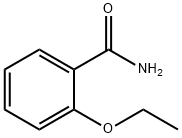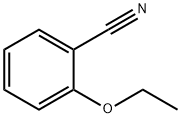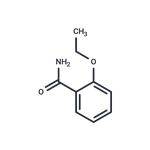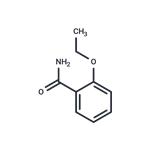Chemical Properties
WHITE TO ALMOST WHITE GRANULAR CRYSTALLINE POWDER
Originator
Ethenzamide,Tongxiang Hengda
Definition
ChEBI: Ethenzamide is an organic molecular entity.
Manufacturing Process
500 g of salicylic amide are dissolved in 1.5 L of 10% alcohol by means of
146 g of sodium hydroxide. 560 g diethyl sulphate are added, the mixture is
frequently shaken during four hours and kept cold. 20 hours later the 2-
ethoxy-benzamide is precipitated in a gritty state and is removed by suction
and dried at 50°-100°C. The yield is 540 g or about 90%. MP: 130°C.
Therapeutic Function
Analgesic
General Description
White or almost-white crystalline powder. Almost odorless. Tasteless.
Air & Water Reactions
Insoluble in water.
Reactivity Profile
2-Ethoxybenzamide is an amide. Amides/imides react with azo and diazo compounds to generate toxic gases. Flammable gases are formed by the reaction of organic amides/imides with strong reducing agents. Amides are very weak bases (weaker than water). Imides are less basic yet and in fact react with strong bases to form salts. That is, they can react as acids. Mixing amides with dehydrating agents such as P2O5 or SOCl2 generates the corresponding nitrile. The combustion of these compounds generates mixed oxides of nitrogen (NOx).
Health Hazard
ACUTE/CHRONIC HAZARDS: When heated to decomposition 2-Ethoxybenzamide emits toxic fumes of nitrogen oxides.
Fire Hazard
Flash point data for 2-Ethoxybenzamide are not available; however, 2-Ethoxybenzamide is probably combustible.
Clinical Use
Ethenzamide is a nonsteroidal
anti-inflammatory drug used mainly in combination
with other ingredients for the treatment of
mild to moderate pain including musculoskeletal
and joint disorders.





